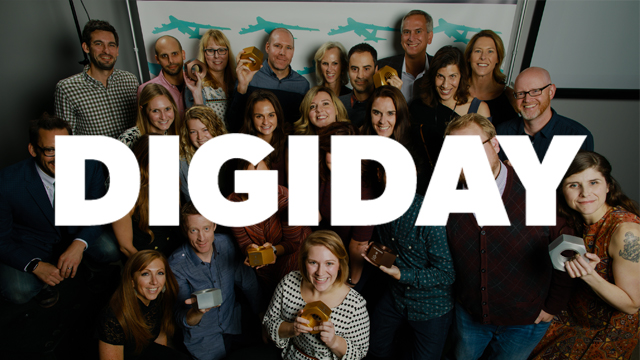How independent digital agency Cramer-Krasselt built its trading desk.
Digiday – June 12, 2017
By Yuyu Chen
For independent shops like Cramer-Krasselt, the shift to programmatic presents challenges. They don’t have the resources to pour into proprietary tech like the big holding companies. For Cramer-Krasselt, that has meant stitching together ad-tech partners to form its own trading desk — and educating all of its employees on the ins and outs of programmatic.
“For a long time, media-holding companies maintained the agency trading desks as a centralized profit center, and the next trend is midsized independent shops started getting into programmatic by working with companies like Digilant and Choozle,” said Eric Bader, managing director and co-founder for digital consultancy Volando.
The system (named “DesCK”) was moved out of beta last year, and now, the agency has an ad-tech team of 10 to run programmatic campaigns for clients including Edward Jones Investments, Cedar Fair Entertainment and blender brand Vitamix. The agency uses the technology infrastructure developed by its data management and five demand-side platform partners including The Trade Desk, and then adds its own data and budget-control system on top of that.
“We would be locked in if we build our own tech from scratch because there’s a cost, and once you want to change things, you cannot adjust quickly,” said Chris Wexler, the agency’s director of media and consumer engagement. “By leveraging others’ tech infrastructure, we can be very nimble in terms of what we want to buy, how we want to buy and how to measure it.”
One big differentiator in Cramer-Krasselt’s trading desk is that the agency has built it as a multi-DSP tech stack, with one single DMP that is governed by a proprietary analytical, fraud and budget management system that “significantly” enhances the agency’s DSP and exchange partners, added Wexler.
“If we had built DesCK with just The Trade Desk, while the tech is good, we would be missing out on the best results for our clients,” he said.
Cramer-Krasselt built its DMP based on Salesforce-owned Krux and then uses that DMP as “the core source of truth” to get the cleanest view of data possible. This is because if a marketer buys programmatic inventory from a publisher, for instance, the publisher’s own analytics may show it has 100,000 impressions per month, while comScore may say that the impressions are 90,000. Then, Google shows that the actual number should be 80,000 monthly impressions, while Cramer-Krasselt’s own ad server reveals that it is 70,000 monthly impressions.
“The numbers are moving around, so we need our own DMP to assess those data discrepancies and evaluate one DSP over another,” said Wexler.
Another differentiator in Cramer-Krasselt’s tech stack, he added, is its budget-control system that ensures that ad spend is being executed in the most appropriate way possible. The agency hired programmers on its ad-tech team to write algorithms to help manage budget properly and turn data sets into different formats. “[The budget-control system] ensures that our traders execute the plans with significantly lower error rates than we have ever seen via managed service partners in the past,” said Wexler.
But from an industry perspective, Bader believes that agencies developing their own software is not a good idea. “I cannot comment on Cramer-Krasselt, but generally speaking, agencies are not designing algorithm or logic — they need great programmers and coders to do that right,” he said. “Let’s be realistic, agencies are not in the software business — they are service companies, so developing their own platform is folly.”
While the data, tech and client-service side of its programmatic business are all centralized at Cramer-Krasselt’s headquarters in Chicago, programmatic expertise is distributed across the agency’s offices in Chicago, Milwaukee and New York City. The agency’s head of digital strategy periodically travels to those offices to give Cramer-Krasselt’s 429 employees programmatic workshops.
“We have run programmatic training for every person — both media and creative — in the organization. It is a new currency, a new approach, a new way of thinking and a vital thing for everyone to understand,” said Wexler. “One of the things we are thinking right now is how we can improve creative in programmatic.”
Wexler thinks that one biggest hurdle in building a trading desk is ownership of ad-tech companies constantly changes, and there is much consolidation in the space. Meanwhile, recruiting the right talent and retaining it is another challenge as programmatic is a hot market right now.
“Having the ability to be transparent is also hard,” he said. “It is one thing to say, but it is another thing to do it right.”
More News
- June 13, 2017 Former C-K Create intern wins Collegiate Effie Award.
- June 6, 2017 Takeaways from Google Marketing Next 2017.
- May 31, 2017 The Digiday Programmatic Summit 2017.
